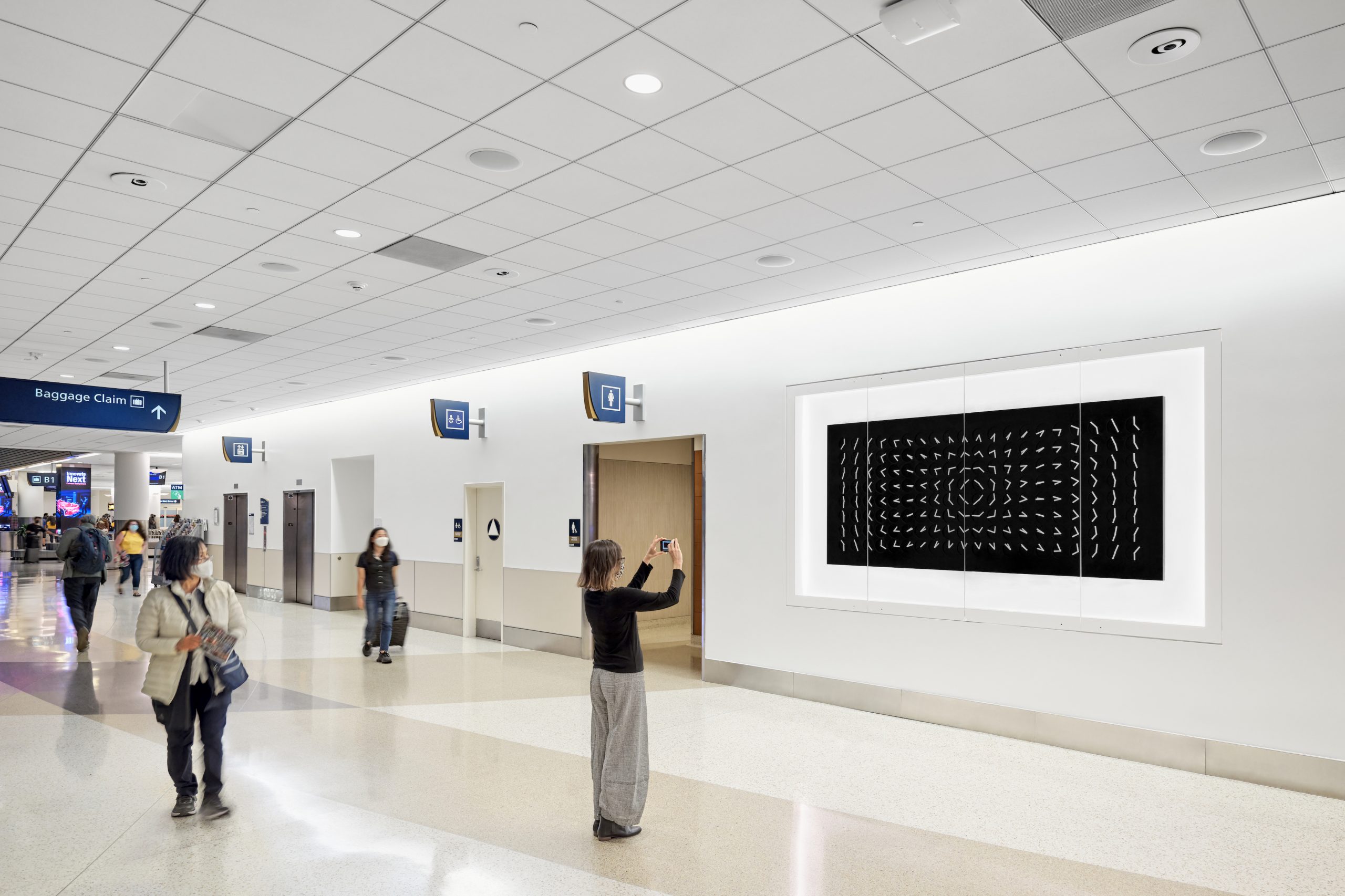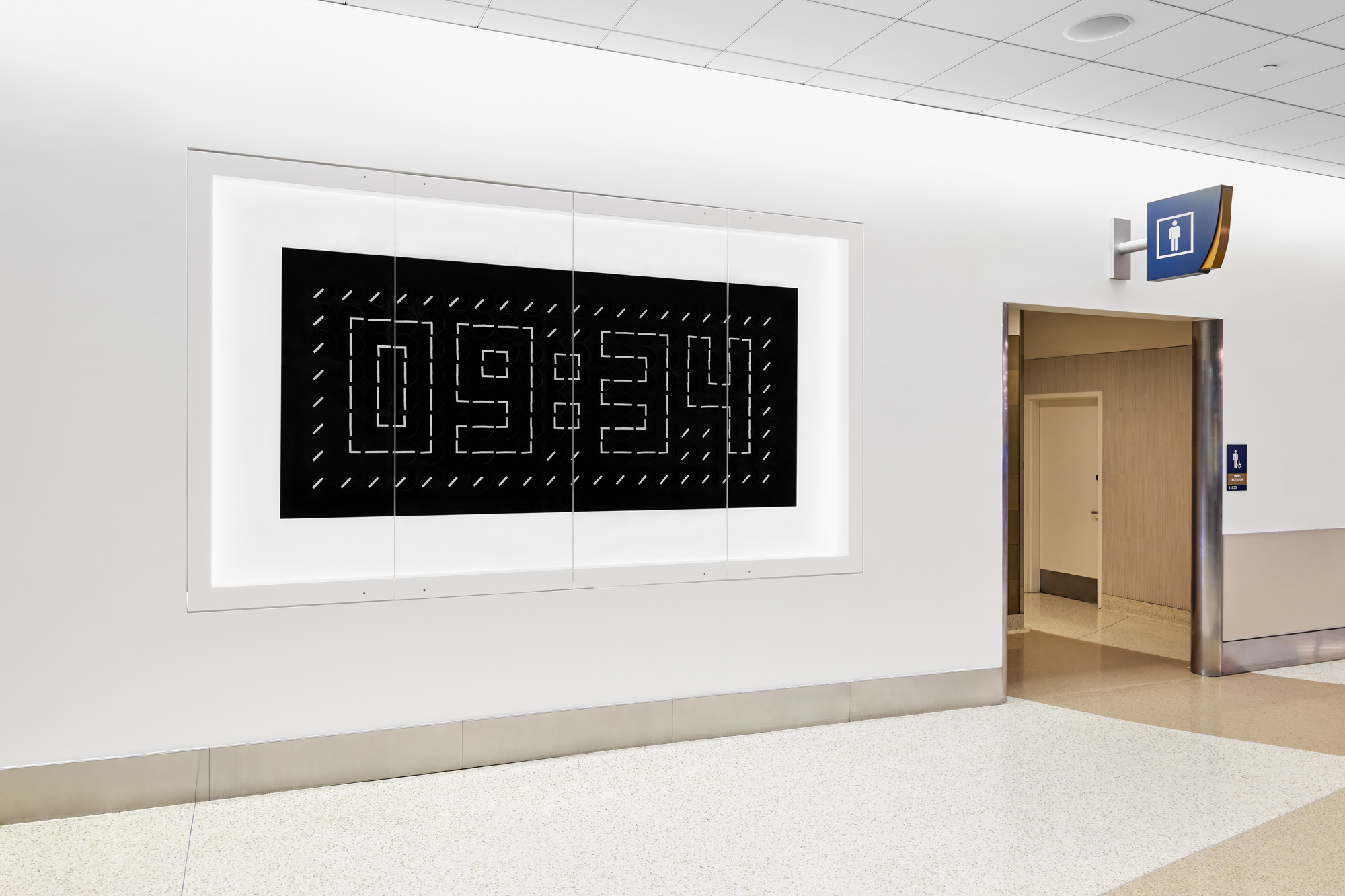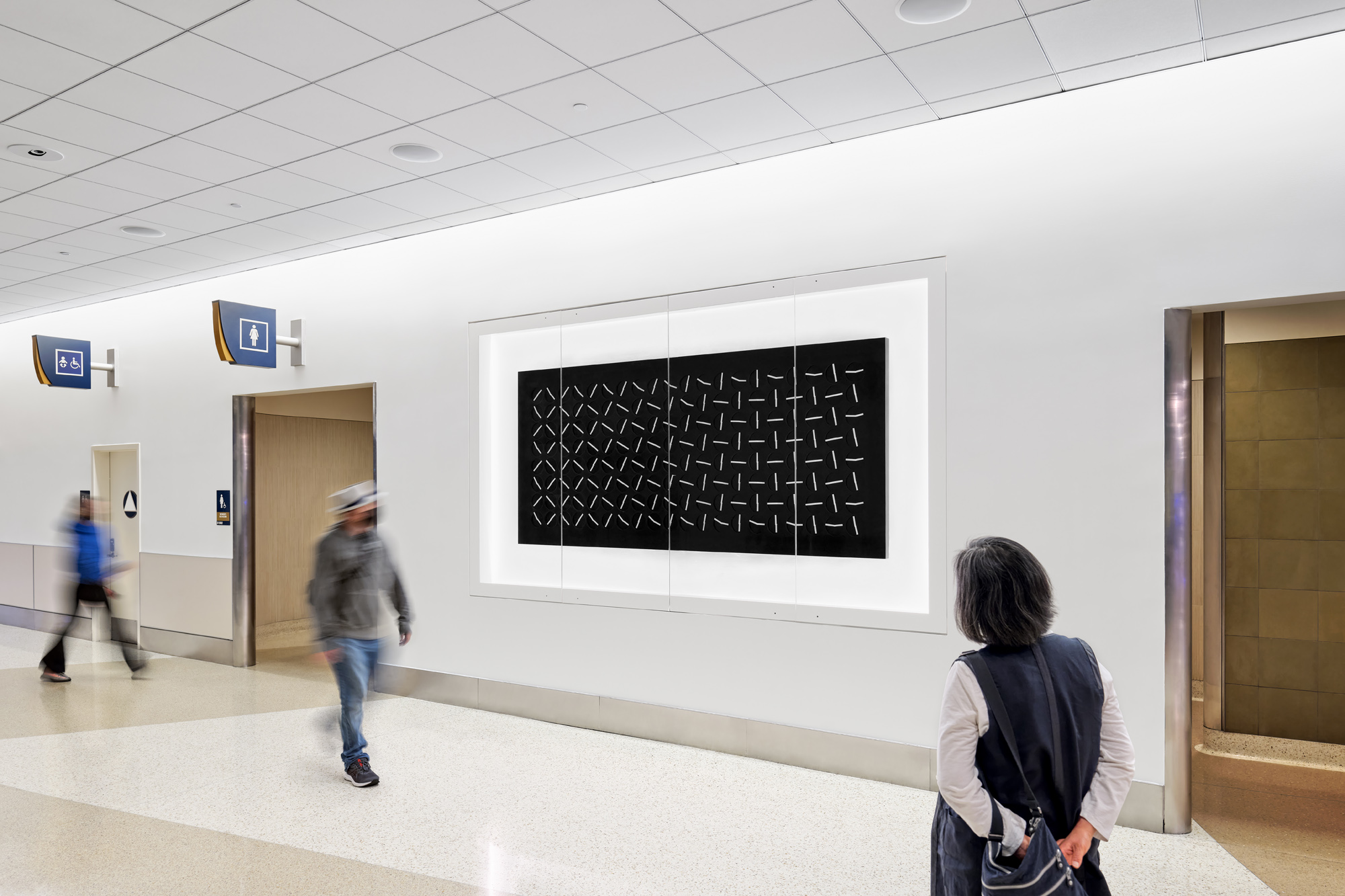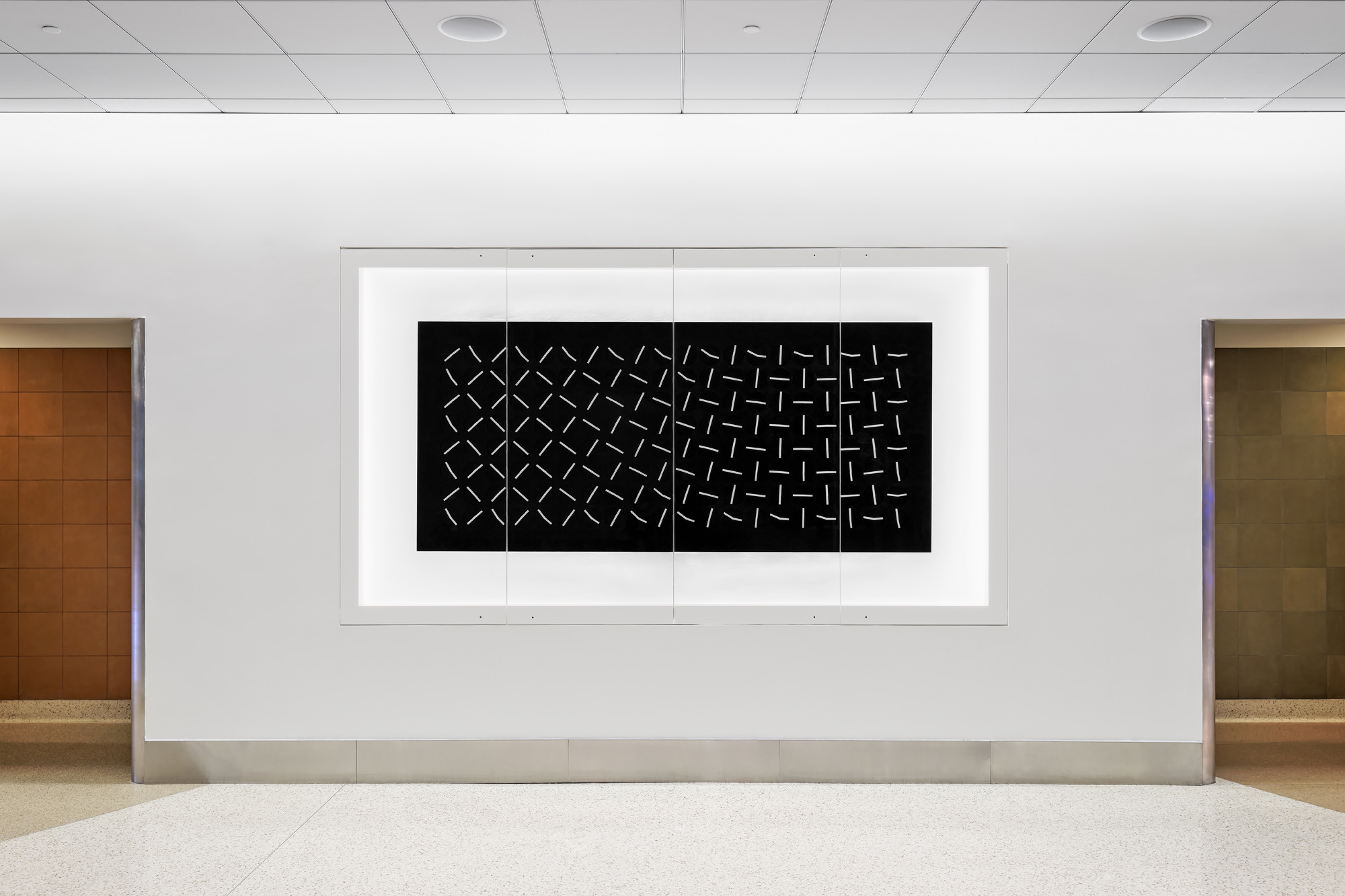



Client: City of San José Public Art Program
Location: San José, CA, United States
Completion date: 2021
Artwork budget: $320,000
Project Team
Artist, Designer, Fabricator
Humans since 1982
Client, Project Manager
San José Public Art
Custom Museum Glass
Case[werks], LLC
Structural Engineer
ZFA Structural Engineers
Contractor, Installer
Tucker Construction Inc.
Network Integration
Gorbet Design Inc. and San Jose Airport IT
Client, Project Management
San José Public Art Program
Overview
This kinetic artwork accurately tells time while playfully representing the concept of passing time. A million Times (San José) features the hands of 160 analogue clocks programmed to spin individually to perform synchronized abstract choreographies.
The artwork, produced in two black stone-like panels, showcase the 160 clock faces with contrasting white hands. A million Times (San José) is driven by the artists’ custom technology. Once every minute, the clock hands align to display the actual time in a digital font. When the hands rotate again, the digital clock face falls apart into movement patterns that are signature to the series.
Within the collection of choreographies, three compositions were custom designed by the artists for A million Times (San José), each taking inspiration from the location of the artwork within airport and San José itself. These abstract patterns draw upon San José as an engine for technological development, the city’s proximity to the ocean, and the busy hub of the airport with its ever-rotating arrivals and departures. These reference points share a common, cyclical theme: everything is perpetually in motion, fluid, and changing.
Goals
Airports are highly secure and programmed environments. “A million Times (San José)” is in a high traffic area in San José Mineta International Airport’s Terminal B, between the airline ticketing and baggage claim. Within this busy landscape, a seamless and secure integration with site was critical. In response to this active environment, the work is framed within a niche allowing a protective museum glass front flush. The detailing amplifies the artwork’s presence in the busy terminal and protects it from dust and vandalism.
Conceptual integration was another consideration for this work. Guided by the airport’s Art + Technology Public Art Master Plan, the opportunity called for an innovative design working with, and/or commenting on, technology. “A million Times (San José)” met both these goals. Certainly, the passage of time is part of any airport visit, whether we are waiting for a departing flight, arriving loved ones, or suitcases. The artists use technology to present an innovative way of visualizing time by presenting clocks as objects that transcend their ordinary functional existence, transforming “waiting” into a hypnotic experience for the viewer, whether it be passengers or airport/airline employees.
Process
The site location was originally programed for temporary technology-based artworks. Based on 8-years of experience with the site, public art staff understood that light-based, and interactive work went largely unnoticed by the travelling public. Commissioning Humans since 1982 had the potential to accomplish a new, highly memorable and popular ‘signature’ piece for San Jose Mineta International Airport.
Responding to the complexity of site circulation, and the airport’s security and technology infrastructure, the artists worked with public art and airport staff to consider something other than a traditional wall mounted installation. Several options were explored to protect the installation from vandalism. The artists’ solution of framing the artwork within an oversized niche, expanded the scale of the installation and thus the impact of the artwork without exceeding the original budget. It also addressed the need for protection from the extreme dust that is a part of the airport environment, increasing the maintainability and thus longevity of the piece.
Additional Information
Originally scheduled to install in October 2020, work on the project was impacted by the COVID-19 pandemic. Based in Sweden, the artists were unable to travel to manage the installation. Instead, they worked remotely with public art staff to support the installation. A team of San Jose engineers and contractors accomplished the installation. Additional network support was provided by the Gorbet Design, Inc. and San Jose Mineta International Airport's Information Technology staff.